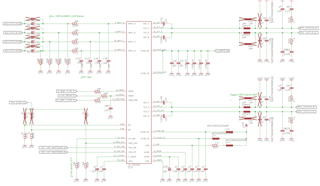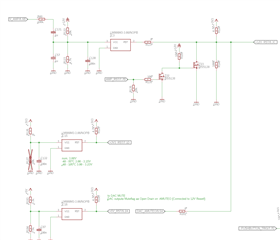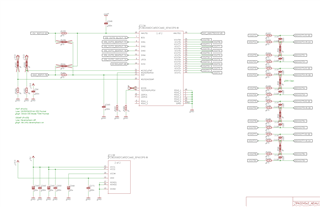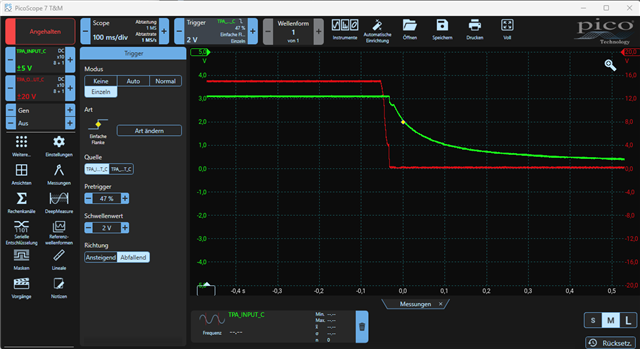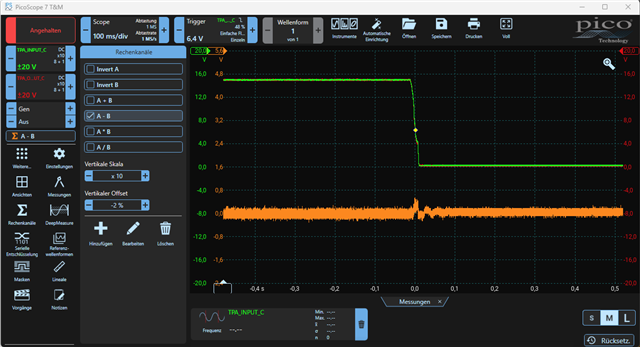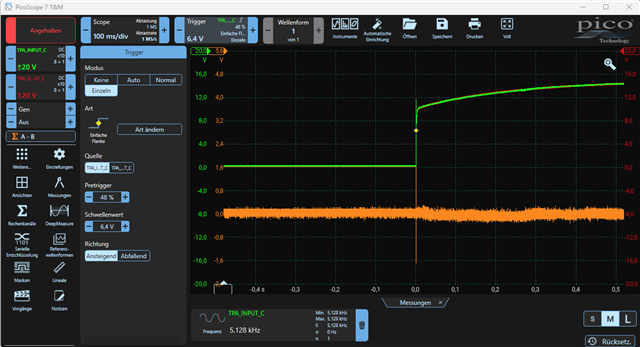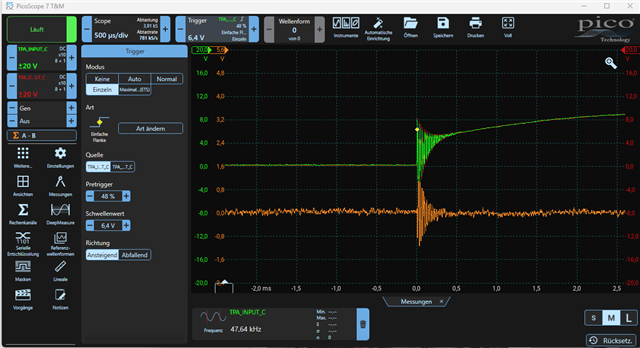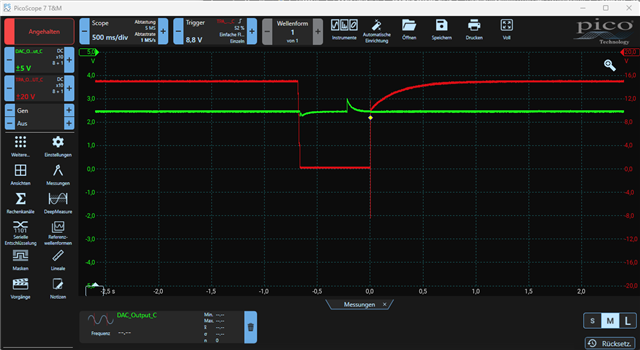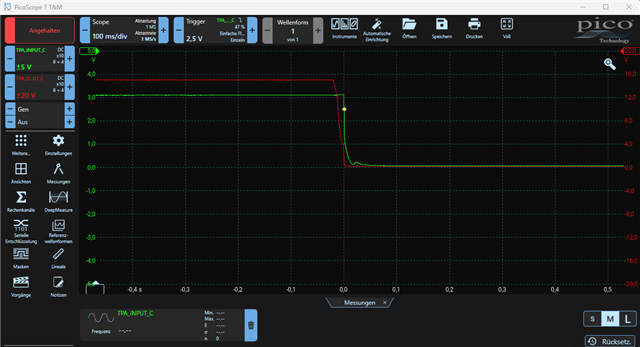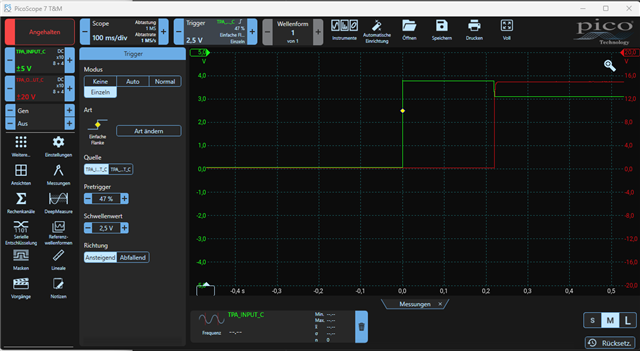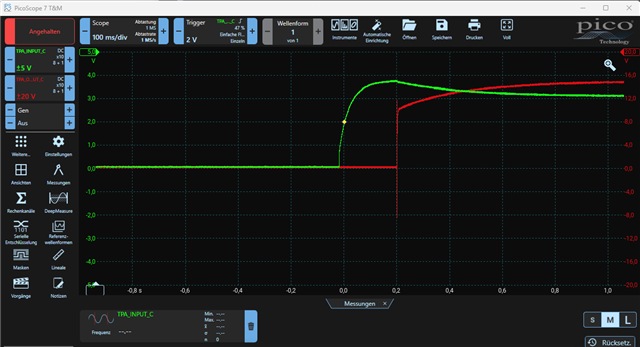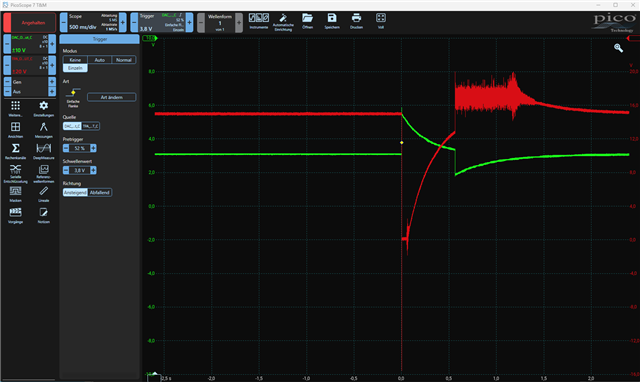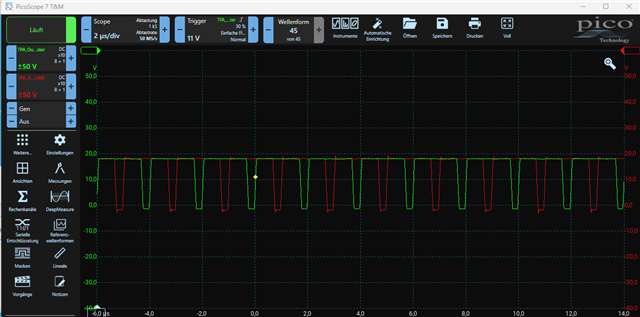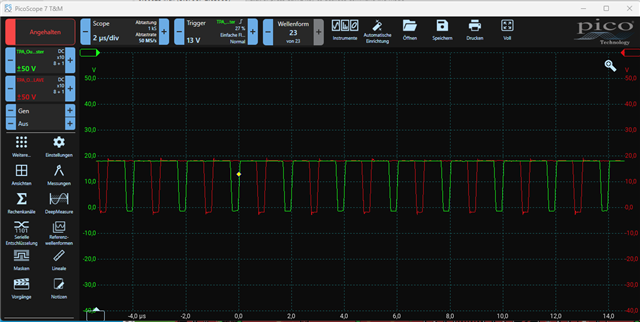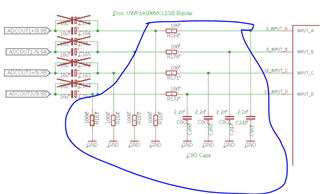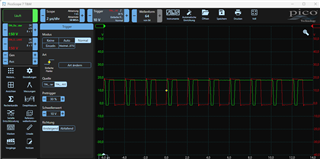Other Parts Discussed in Thread: PCM1690,
Hello all,
im using two of the TPA3245s hooked up to a PCM1690 DAC, all together controlled via DSP/MCU for a well defined startup/shutdown procedure. The last/first thing in this procedure is to enable the Amplifiers via RESET in order to avoid any noise. Meanwhile during testing, i found actually toggleling the RESET High/Low already triggers a minor, yet audible "plop". Attached are the screenshots of relevant schematics. (take note, the Nets named ADCOUTxxx are actually DACOUTs, dont be confused here)
The Small peaks during RESET on/off seem to cause the small pop noise. Decreasing the C_Start Capacitor down to 33n improved it further, decreasing below 33n did not yield any further improvement. The other way round, the 1u actually did very much worse during turnoff, where for ~100ms white noise occured on the outputs. --> should probably be disregarded due to the very high C_Start Value. [100n is now placed!]
What also was tried:
- Removing the 2n2 Filter Caps to Ground directly infront of the TPA-Pins --> no Change.
- Changing the series Resistor between the AC-Coupling Caps and the TPA Pins: (10Ohms .... 470Ohms.) --> no Change.
- Removing the connection to AC-Cap completely and leaving the analog Pins "open" --> slight improvement, but this is no functional state since nothing is connected
- Adding additional 100k Pulldown Resistors on the AC-Caps on the DAC-Side --> no Change
- Turning off the DAC (in RESET) --> no change.
I'd be glad to recieve some help here, since a clear goal is to keep the amp 100% silent during startup/shutdown. As far as i understand from the Datasheet, this should be possible.
Thanks in advance!
Best regards,
Lukas
